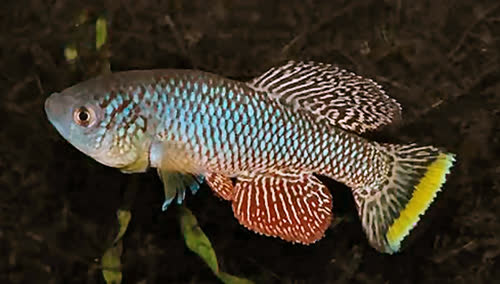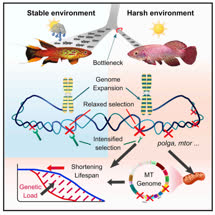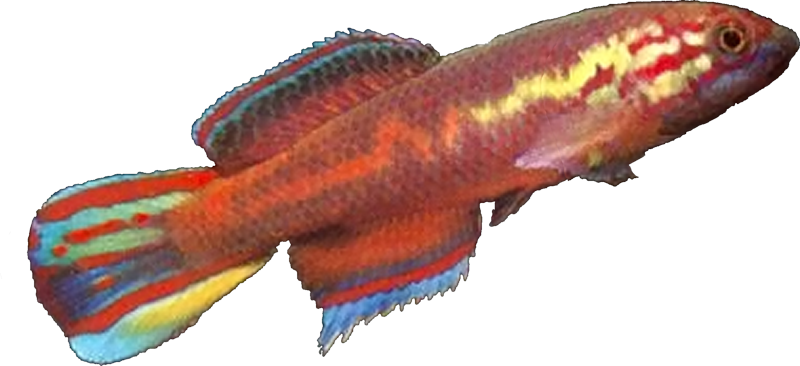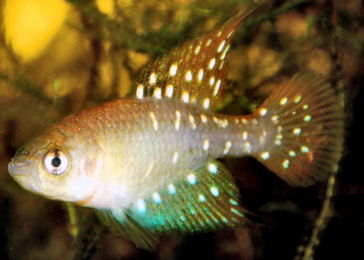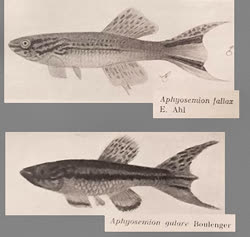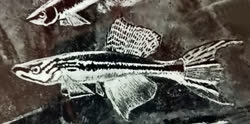|
PDF of an XLS of an index of Killi Notes and JAKA (Journal of the American Killifish Association) from 1962 to 2010. |
|
Not only do the eggs have special adaptation to extreme climate but the parents do too. Nearly all killifish live about years or more. Some species of killifish are true "annuals" and die after one "season" even in aquaria where other "annual" species live for years. But there are a couple of species that live for short period - 5 months or so, that they're used in aging studies. Absolutely nothing will keep them alive longer than this no matter what you do. The implications of this are rather staggering. When we can keep one of these short lives species - and Nothobranchius furzeri is used as the model organism, alive, then we're well on the way if not have entirely solved the aging problem. |
|
Short bibliography of the vast chromosomal differences that exist in the Killifish. Example: Gnatholebias zonatus and G. Hoignei have different numbers of chromosomes, but only in the male fish. |
|
Diapause could perhaps be the inspiration for science fiction suspended animation because that is pretty much what happens. After an egg is fertilized it divides, turns into an embryo and then just stops for days sometimes weeks - and sometimes in response to living in conditions where the waters dry up seasonably for moths at a time. Keep in mind however this is a fairly rare feature even on killifish and a highly specialized adaptation within the killifish species which mostly lay eggs that only take days to incubate We don't know enough about this but do know that killi eggs should be kept much warmer than we previously thought. Consistent with the life cycle, the parents water may be 72-72 but eggs in very very shallow weed choked water or buried an inch below the mud are going to be 80-90 not 72. Incubation times at high temperature are much shorted than most published incubation times, always look for a temperature reading when you see incubation times given because the long slow ones ones bear little resemblance to the short hot ones. This would make sense from an evolutionary standpoint, in the case of Gnatholebias zonatus, a 9 month incubation temperature can be reduced to 5 weeks according to Roger Brousseau. Thus, in nature if a pond dried up but was refilled some fish will hatch later and this can only happen if it's very hot, cool ponds dry up much more slowly. So under some conditions , because true annual fishes sexually mature in weeks not months nature has another chance to get more eggs into the mud this season while other eggs, their siblings are still resting and will show up as along the last eggs to hatch. |
|
In a post-911 world the question "can I take killifish on an airplane" in the United States is the subject of some debate. Here's what the relevant authorities say. |
